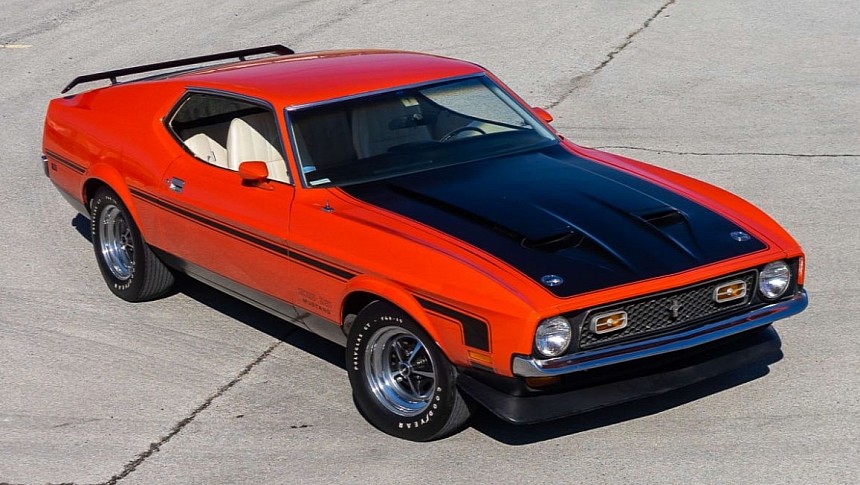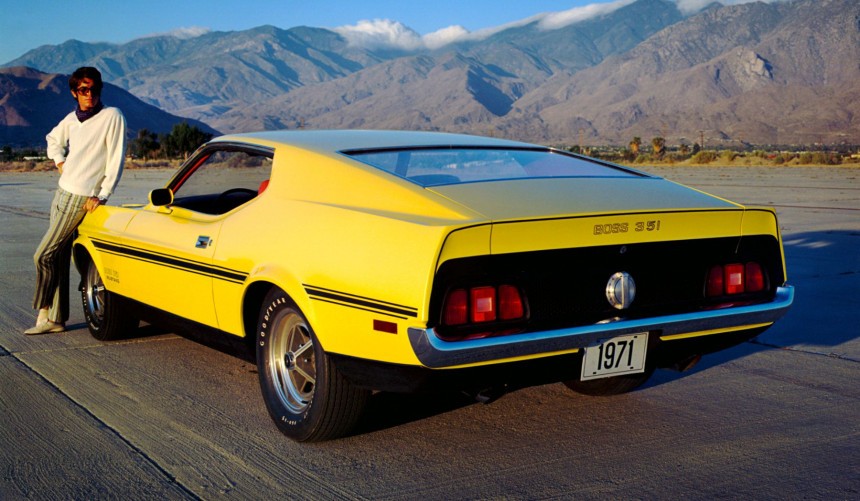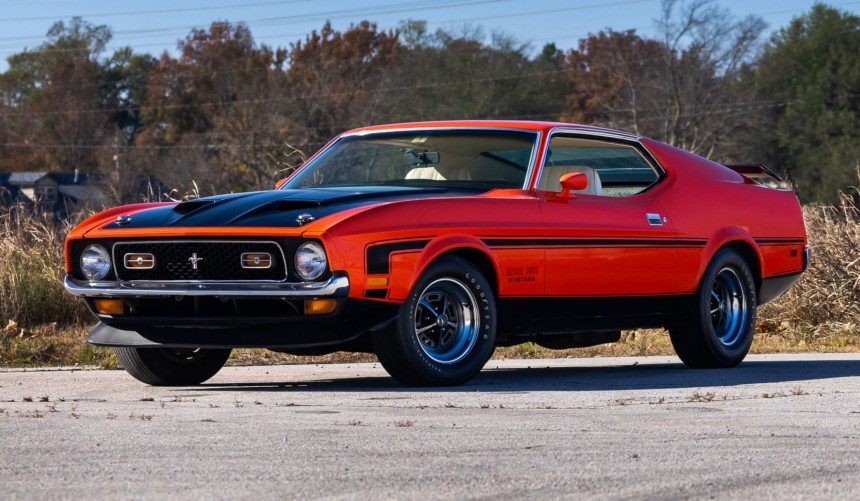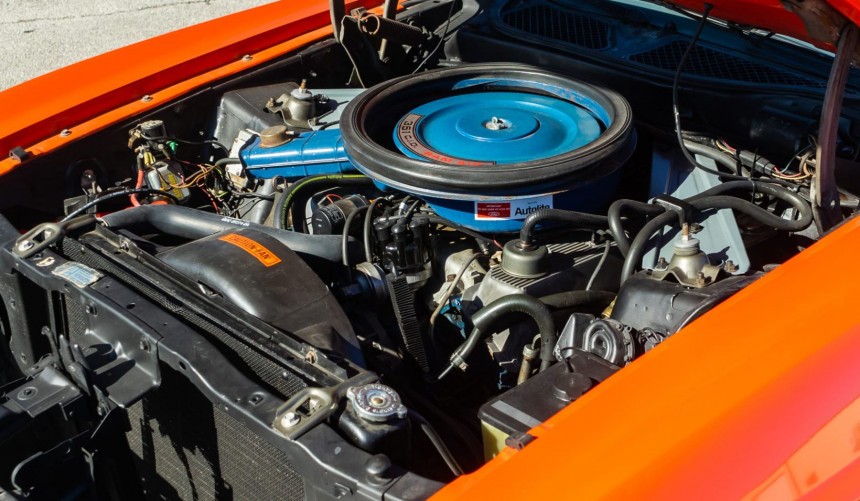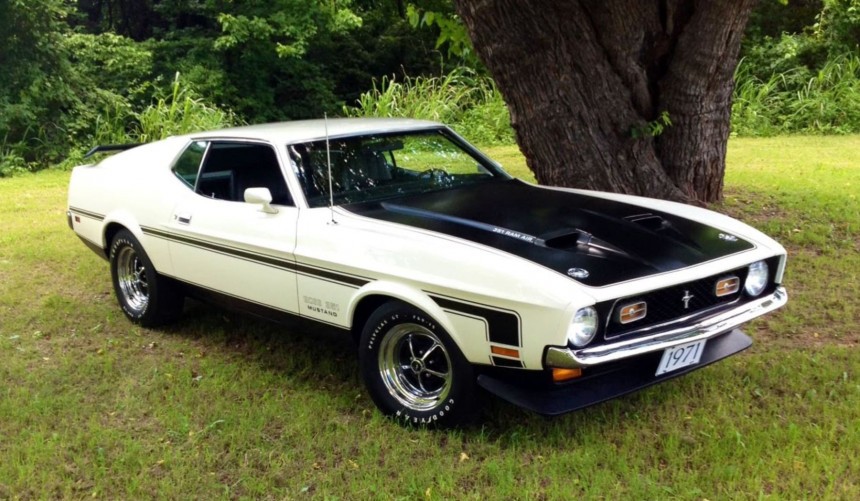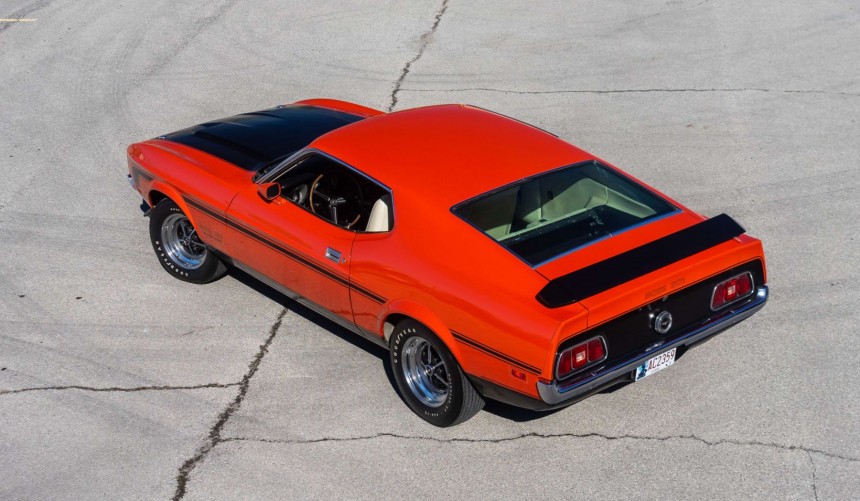As the government and insurance companies declared war on the Motor City's mass-produced muscle cars, Ford had one final Boss in store for them.
Half a century since the last example rolled off the assembly line, the first generation remains the most legendary Mustang series of them all.
During a production run that lasted eleven years, the first-generation 'Stang coined the pony car segment, shattered sales records, and, thanks to its high-performance versions, went from a secretary's car (as Carroll Shelby once called it) to a legitimate muscle car icon.
But while 1969 and 1970 were the glory years for potent Mustangs and all of Detrot's factory-built high-performance models, 1971 signaled the abrupt end of what was arguably the American automotive industry's most exciting decade.
In just a few months, scheduled insurance rate hikes, the government's Clean Air Act, and signs of a looming fuel crisis led to noticeably fewer performance-related entries on all carmaker's brochures.
On the Mustang's brochure for 1971, the Boss 302 and 429, as well as their high-powered engines, disappeared, while most of the remaining V8s lost some of their might.
Nevertheless, Ford wasn't ready to say goodbye to muscular 'Stangs. Apart from keeping the Mach 1 trim alive and adding the 429 Cobra Jet to the list of optional V8s, the Blue Oval also released a new Boss that went down as the last, great thoroughbred first-generation Mustang.
The first-generation 'Stang underwent several redesigns throughout its lifespan, with the last debuting for the 1971 model year. However, unlike the previous revamps, this one became the most controversial.
Greenlight by Semon "Bunkie" Knudsen, who'd jumped ship from rivals GM a few years earlier, the '71 Mustang - particularly the SportsRoof (aka fastback) version - looked more like AMC's Javelin than its predecessors.
Longer, wider, and much heavier, the pony car had lost some of its iconic cues, and its popular SportsRoof was now a few degrees short of turning the Mustang into a van with a panoramic roof.
The questionable design of the so-called "flat-back" led to poor rear visibility and, thus, heavy criticism from owners and the press.
Available only as a SportsRoof, the new Boss 351 suffered from this major issue. However, since it helped carry the muscle car torch for another model year, the visibility issue was easy to ignore.
In keeping with tradition, Ford gave the Boss 351 a series of visual upgrades to distinguish it from lesser Mustangs.
The list included a chin spoiler, a honeycomb grille, a predominantly blacked-out dual air scoop, twist-lock hood, a side hockey-stick stripe package accompanied by Boss 351 Mustang lettering, and a rear spoiler.
However, unlike the previous Boss 'Stangs, the 351 looked nearly identical to the Mach 1, especially when both donned the same exterior color. Only the lettering and the larger black portion of the hood helped differentiate the two, as they shared the same side stripes, spoilers, and hood.
Inside, both models came with the same standard interior. Even if customers chose the optional Deluxe Decor group or the Mach 1 Sports Interior, there was nothing unique for either model.
But despite looking much like the Mach 1, under the hood, the Boss 351 hid a V8 that wasn't available on any other 1971 Mustang.
The real difference-maker was nestled between the Boss 351's front shock towers.
Though it displaced 351 cubic inches (5.8 liters), like the other Ford 335-series Cleveland V8s available on the standard Mustang, the Boss version was a different monster conceived to squeeze as much performance as it was still legally possible out of the Cleveland architecture.
Dubbed R-code, the unique 351 was equipped with four-bolt mains, forged steel connecting rods, forged aluminum pistons, a hotter cam, upgraded cylinder heads, and a lighter dual-plane aluminum intake with a 750-cfm four-barrel carb on top.
With all the high-performance hardware, the R-code 351 could deliver 330 hp at 5400 rpm and 370 lb-ft of torque at 4000 rpm, which made it more potent than the discontinued Boss 302 engine.
All that power was sent to the rear wheels through a four-speed manual equipped with a Hurst T-handle and a 9-inch Traction-Lok limited-slip differential with 3.91:1 gears.
Though the redesigned body was heavier than all previous versions, the powerful engine, performance-oriented drivetrain, and the standard Competition Suspension made the Boss 351 an epic performer.
In multiple independent tests conducted by famous car magazines, the original muscle car era's final Boss consistently yielded sub-six-second 0 to 60 mph (97 kph) acceleration times and ran the quarter mile in the mid-to-high thirteens.
Those figures made it substantially faster than the Boss 302 homologation special and awfully close to the legendary Boss 429.
Apart from past Boss models, the 351 was also generally faster than the Mach 1, which was available with the 370/375 hp 429-ci (7.0-liter) Cobra Jet.
I say "generally" because the 1971 429 Mach 1s tested by magazines during the period left the factory with 9-inch Traction-Lok diffs with 3.25:1 gears. The difference in gearing and the weight disadvantage led to slower acceleration and quarter-mile sprints compared to the Boss 351.
However, a head-to-head test between a 429 Mach 1 and a 351 Boss with the same (3.91:1) differential gearing was never conducted, so we can't say for sure that the 351 was the quickest Mustang available in 1971.
Partially because of the questionable redesign, the entire 1971 Mustang lineup suffered a drop in sales.
While Ford had sold over 190,000 pony cars in 1970, at the end of the 1971 model year, total sales dropped to around 150,000 units.
Nearly $1,000 ($7,574 in 2024 money) more expensive than a base 'Stang, the first-generation's last Boss was produced in only 1,806 examples. Since the writing was on the wall for muscle cars, the 351 became a one-year-only affair, with Ford dropping it from its lineup in 1972.
Today, the Boss 351 is recognized as one of the greatest high-performance Mustangs from the golden age of muscle cars, but because of its styling, it's not one of the most expensive and sought-after.
Restored examples in good shape can be found in the $40,000 to $50,000 range, while highly original matching-numbers survivors with few miles on the odometer might go into six-figure territory.
Although many consider it the ugly duckling of the first-generation Mustang's performance lineup, there's no denying that the Boss 351 was, is, and will be a muscle car legend.
For more on this iconic Ford, we recommend watching the YouTube video below by MuscleCarOfTheWeek.
During a production run that lasted eleven years, the first-generation 'Stang coined the pony car segment, shattered sales records, and, thanks to its high-performance versions, went from a secretary's car (as Carroll Shelby once called it) to a legitimate muscle car icon.
But while 1969 and 1970 were the glory years for potent Mustangs and all of Detrot's factory-built high-performance models, 1971 signaled the abrupt end of what was arguably the American automotive industry's most exciting decade.
In just a few months, scheduled insurance rate hikes, the government's Clean Air Act, and signs of a looming fuel crisis led to noticeably fewer performance-related entries on all carmaker's brochures.
On the Mustang's brochure for 1971, the Boss 302 and 429, as well as their high-powered engines, disappeared, while most of the remaining V8s lost some of their might.
Nevertheless, Ford wasn't ready to say goodbye to muscular 'Stangs. Apart from keeping the Mach 1 trim alive and adding the 429 Cobra Jet to the list of optional V8s, the Blue Oval also released a new Boss that went down as the last, great thoroughbred first-generation Mustang.
The final, most controversial redesign
Greenlight by Semon "Bunkie" Knudsen, who'd jumped ship from rivals GM a few years earlier, the '71 Mustang - particularly the SportsRoof (aka fastback) version - looked more like AMC's Javelin than its predecessors.
Longer, wider, and much heavier, the pony car had lost some of its iconic cues, and its popular SportsRoof was now a few degrees short of turning the Mustang into a van with a panoramic roof.
The questionable design of the so-called "flat-back" led to poor rear visibility and, thus, heavy criticism from owners and the press.
Available only as a SportsRoof, the new Boss 351 suffered from this major issue. However, since it helped carry the muscle car torch for another model year, the visibility issue was easy to ignore.
Nearly identical to the Mach 1
The list included a chin spoiler, a honeycomb grille, a predominantly blacked-out dual air scoop, twist-lock hood, a side hockey-stick stripe package accompanied by Boss 351 Mustang lettering, and a rear spoiler.
However, unlike the previous Boss 'Stangs, the 351 looked nearly identical to the Mach 1, especially when both donned the same exterior color. Only the lettering and the larger black portion of the hood helped differentiate the two, as they shared the same side stripes, spoilers, and hood.
Inside, both models came with the same standard interior. Even if customers chose the optional Deluxe Decor group or the Mach 1 Sports Interior, there was nothing unique for either model.
But despite looking much like the Mach 1, under the hood, the Boss 351 hid a V8 that wasn't available on any other 1971 Mustang.
Powered by a bespoke high-performance V8
Though it displaced 351 cubic inches (5.8 liters), like the other Ford 335-series Cleveland V8s available on the standard Mustang, the Boss version was a different monster conceived to squeeze as much performance as it was still legally possible out of the Cleveland architecture.
Dubbed R-code, the unique 351 was equipped with four-bolt mains, forged steel connecting rods, forged aluminum pistons, a hotter cam, upgraded cylinder heads, and a lighter dual-plane aluminum intake with a 750-cfm four-barrel carb on top.
With all the high-performance hardware, the R-code 351 could deliver 330 hp at 5400 rpm and 370 lb-ft of torque at 4000 rpm, which made it more potent than the discontinued Boss 302 engine.
All that power was sent to the rear wheels through a four-speed manual equipped with a Hurst T-handle and a 9-inch Traction-Lok limited-slip differential with 3.91:1 gears.
One of the fastest first-generation Mustangs
In multiple independent tests conducted by famous car magazines, the original muscle car era's final Boss consistently yielded sub-six-second 0 to 60 mph (97 kph) acceleration times and ran the quarter mile in the mid-to-high thirteens.
Those figures made it substantially faster than the Boss 302 homologation special and awfully close to the legendary Boss 429.
Apart from past Boss models, the 351 was also generally faster than the Mach 1, which was available with the 370/375 hp 429-ci (7.0-liter) Cobra Jet.
I say "generally" because the 1971 429 Mach 1s tested by magazines during the period left the factory with 9-inch Traction-Lok diffs with 3.25:1 gears. The difference in gearing and the weight disadvantage led to slower acceleration and quarter-mile sprints compared to the Boss 351.
However, a head-to-head test between a 429 Mach 1 and a 351 Boss with the same (3.91:1) differential gearing was never conducted, so we can't say for sure that the 351 was the quickest Mustang available in 1971.
The 1971 Mustang Boss 351 today
While Ford had sold over 190,000 pony cars in 1970, at the end of the 1971 model year, total sales dropped to around 150,000 units.
Nearly $1,000 ($7,574 in 2024 money) more expensive than a base 'Stang, the first-generation's last Boss was produced in only 1,806 examples. Since the writing was on the wall for muscle cars, the 351 became a one-year-only affair, with Ford dropping it from its lineup in 1972.
Today, the Boss 351 is recognized as one of the greatest high-performance Mustangs from the golden age of muscle cars, but because of its styling, it's not one of the most expensive and sought-after.
Restored examples in good shape can be found in the $40,000 to $50,000 range, while highly original matching-numbers survivors with few miles on the odometer might go into six-figure territory.
Although many consider it the ugly duckling of the first-generation Mustang's performance lineup, there's no denying that the Boss 351 was, is, and will be a muscle car legend.
For more on this iconic Ford, we recommend watching the YouTube video below by MuscleCarOfTheWeek.
